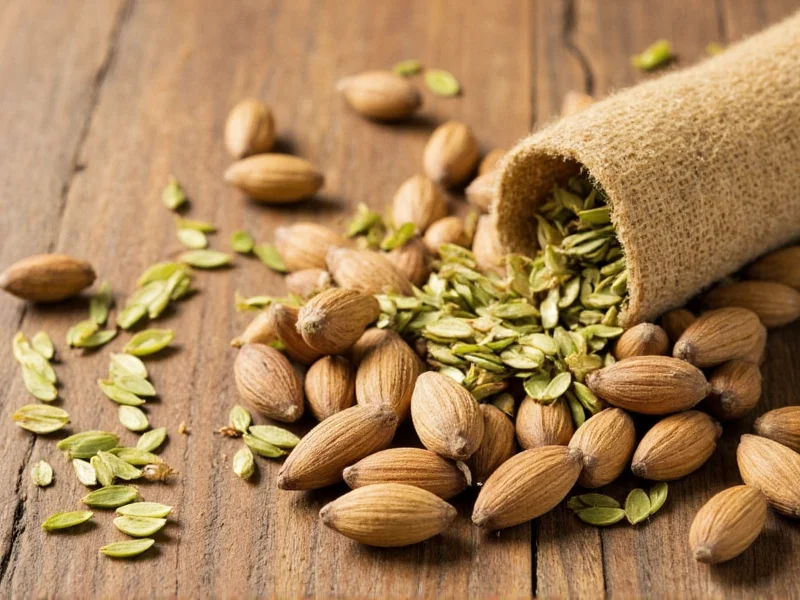Understanding Cardamom Varieties and Their Best Uses
Cardamom comes primarily in two varieties: green and black, each with distinct flavor profiles and culinary applications. Green cardamom (Elettaria cardamomum), the most common type, offers a sweet, floral, citrusy flavor perfect for baking and lighter dishes. Black cardamom (Amomum subulatum) has a smoky, camphorous taste better suited for hearty meat dishes and certain Indian curries.
When learning how do you use cardamom effectively, recognizing these differences is crucial. Green cardamom pods should be bright green and slightly soft to the touch, while black cardamom pods are larger, darker, and more rugged. Never substitute one for the other in recipes requiring specific cardamom types, as their flavors differ significantly.
Preparing Cardamom for Cooking and Baking
Proper preparation maximizes cardamom's aromatic potential. For how to use cardamom in baking recipes, follow these preparation methods:
- Whole pods: Add directly to rice dishes, stews, or chai tea, removing before serving
- Seeds only: Crush pods gently with a mortar and pestle to extract seeds, then use whole or ground
- Ground cardamom: Grind seeds in a spice grinder for baking applications where visible seeds would be undesirable
- Freshly ground vs pre-ground: Always prefer freshly ground cardamom for superior flavor intensity
When how to grind cardamom pods, lightly crush the pod first to release the seeds, then separate and grind only the black seeds. The pod itself is too fibrous for consumption in most applications, though it can flavor liquids when steeped.
Precise Measurements for Perfect Flavor Balance
One of the most common questions about how do you use cardamom involves proper measurements. Cardamom's potent flavor can easily overwhelm a dish if used excessively. Follow these guidelines:
| Application | Whole Pods | Seeds (crushed) | Ground Cardamom |
|---|---|---|---|
| Baking (per cup of flour) | N/A | 10-15 seeds | 1/4-1/2 teaspoon |
| Rice dishes (4 servings) | 3-4 pods | 10 seeds | 1/4 teaspoon |
| Chai tea (per cup) | 1 pod | 3-4 seeds | 1/8 teaspoon |
| Savory stews (6 servings) | 4-5 pods | 15 seeds | 1/2 teaspoon |
Remember that cardamom measurement for coffee differs from baking—use just 1-2 crushed seeds per cup of coffee for a subtle aromatic enhancement without overpowering the coffee flavor.
Culinary Applications Across Different Dishes
Understanding how to use cardamom in Scandinavian baking versus Middle Eastern or Indian cuisine reveals its remarkable versatility. In Nordic countries, cardamom flavors breads and pastries like Swedish kardemummabullar. In the Middle East, it's essential in Arabic coffee and rice dishes. Indian cuisine uses it in both sweet and savory applications, from biryanis to desserts.
For best way to use cardamom in desserts, incorporate it early in the baking process to allow flavors to develop. In cookie or cake batter, mix ground cardamom thoroughly with dry ingredients. For custards and creams, infuse the liquid with crushed pods before tempering eggs.
When how to use black cardamom in cooking, add whole pods at the beginning of cooking to allow the smoky flavor to permeate the dish. Remove pods before serving as they're too tough to eat. Black cardamom works particularly well in meat curries, lentil dishes, and certain rice preparations.
Storage Techniques for Maximum Freshness
Proper storage significantly impacts how effectively you can use cardamom pods in recipes. Whole pods retain freshness much longer than ground cardamom. Store green cardamom pods in an airtight container away from light and heat, where they'll maintain peak flavor for 6-12 months. Black cardamom pods last even longer—up to 2 years under proper conditions.
For optimal results when how to store ground cardamom, keep it in a small, opaque container and use within 3-6 months. Never store cardamom in the refrigerator, as moisture degrades quality. For long-term storage, freeze whole pods in an airtight container—this preserves flavor for up to 2 years.
Common Cardamom Mistakes to Avoid
Many home cooks struggle with how do you use cardamom properly due to common mistakes. The most frequent error is using too much—cardamom's intense flavor can dominate a dish when overused. Another mistake is using pre-ground cardamom that's lost its potency; freshly ground always delivers superior flavor.
Don't confuse green and black cardamom varieties, as their flavors differ dramatically. Avoid exposing cardamom to high heat for extended periods, which can make it bitter. When how to use cardamom in coffee, don't add it directly to grounds before brewing—instead, infuse it in the hot water after brewing for better flavor control.
Traditional Pairings That Enhance Cardamom's Flavor
Certain ingredients naturally complement cardamom, creating harmonious flavor profiles. In baking, cardamom pairs beautifully with citrus zest, almonds, and other warm spices like cinnamon and cloves. For how to use cardamom in apple pie, combine it with cinnamon and a touch of nutmeg for a sophisticated flavor profile.
In savory applications, cardamom works well with lamb, basmati rice, yogurt, and tomatoes. When how to use cardamom in Indian cooking, it often appears in garam masala blends alongside cumin, coriander, and cloves. In Middle Eastern cuisine, it complements rose water and orange blossom in desserts.











 浙公网安备
33010002000092号
浙公网安备
33010002000092号 浙B2-20120091-4
浙B2-20120091-4